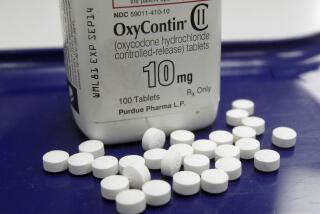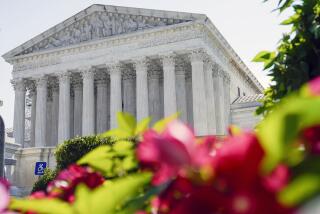Supreme Court Rejects Appeal in HIV Settlement
- Share via
WASHINGTON — Bayer and three other makers of blood products defeated an effort to reopen a $670-million class-action settlement with hemophiliacs who received clotting concentrates tainted with the virus that causes AIDS.
The U.S. Supreme Court on Monday rejected an appeal by a group of plaintiffs’ lawyers who were seeking to increase the $40 million allocated for attorneys’ fees under the settlement.
The appeal, had it been successful, could have forced Bayer, Rhone-Poulenc, Baxter International Inc. and Yoshitomi Pharmaceutical Industries Ltd. to pay more to resolve claims by 6,000 hemophiliacs infected with HIV through the companies’ blood-clotting products.
The settlement, approved by a federal judge in 1997, resolved the vast majority of the claims against the four companies by hemophiliacs infected between 1978 and 1985. Plaintiffs agreeing to be bound by the accord received $100,000 each.
The lawyers, led by Louisiana attorney Tom Mull, represented several hundred members of the class. They said they should have the right to enforce the contingent-fee contracts they signed with their clients. The contracts would potentially have given them as much as a third of the money recovered for each plaintiff.
Although Mull and the lawyers did not directly challenge the settlement, U.S. Circuit Judge Richard Posner called their demands for additional fees “a dagger at the heart of the settlement.”
The settlement capped a decade-long struggle for hemophiliacs seeking compensation after they were infected with the human immunodeficiency virus, or HIV. Activists argued that the companies were negligent and did not do enough to prevent infection of the world’s blood supplies.
Blood products have been heated and screened since 1983 to prevent virus transmission.
The companies already have paid the bulk of the money due under the settlement. Bayer, which had the largest market share of the blood-clotting concentrates at the time the hemophiliacs became infected, is paying 45% of the costs; the other companies contributed smaller percentages.
More to Read
Inside the business of entertainment
The Wide Shot brings you news, analysis and insights on everything from streaming wars to production — and what it all means for the future.
You may occasionally receive promotional content from the Los Angeles Times.










